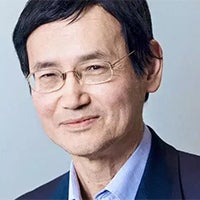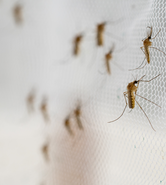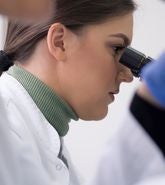A benchmark for modeling progress in the field of human longevity is the Nobel Prize in Physiology or Medicine, which has been awarded annually since the inception of the awards in 1901.
In the early years of Moody’s RMS longevity modeling, the tracking of these awards provided much-needed insight into twentieth-century advances, as well as a window into the future.
Thus, belief in the therapeutic opportunities of stem cell therapy was boosted by the Nobel Prize in Physiology or Medicine 2012, awarded for the discovery that mature cells can be reprogrammed to become pluripotent, giving rise to several cell types.
Without the advances honored by the Nobel Prizes in Physiology or Medicine, longevity improvement would have risked being restricted by the narrow knowledge limits of nineteenth-century medicine. The Nobel Prizes in Physiology or Medicine in 1945 and 1952 were awarded for the discoveries of penicillin, and streptomycin, the first antibiotic effective against tuberculosis.
The Nobel Prize in Physiology or Medicine in 1951 was awarded for the development of the yellow fever vaccine. Like tuberculosis, yellow fever used to be a universally dreaded scourge. In 1793, Philadelphia, which was then the U.S. capital, saw 5,000 (10 percent of the population) die of this disease.
In 1962, the Nobel Prize in Physiology or Medicine was awarded for the discovery of the molecular structure of nucleic acids. This discovery, one of the greatest in all science, has paved the way for other great discoveries.
This includes those that enabled the development of effective mRNA vaccines against COVID-19, and for their seminal contributions, Katalin Karikó and Drew Weissman were awarded the Nobel Prize in Physiology or Medicine in October 2023.
The Nobel Committee noted with a hint at future longevity gains, that the technology may also be used to treat some cancer types.
Examining mRNA
In human cells, genetic information encoded in DNA is transferred to messenger RNA (mRNA), which is used as a template for protein production. During the 1980s, efficient methods for producing mRNA without cell culture were introduced, called in vitro transcription.
This decisive step accelerated the development of molecular biology applications.
However, in vitro transcribed mRNA was considered unstable and challenging to deliver, requiring the development of sophisticated carrier lipid systems to encapsulate the mRNA. Moreover, in vitro-produced mRNA gave rise to inflammatory reactions.
These obstacles diminished the prospects for developing the mRNA technology for clinical purposes.
But, serendipity plays an important role in medical science discovery.
Katalin Karikó first learned about mRNA in 1976 from her university lecturer in Hungary and was inspired to focus on researching mRNA. Her research encountered numerous setbacks; when she tried injecting an mRNA strand into mice, some died due to the inflammation caused by the immune response.
But in 1998, when she was an assistant professor at the University of Pennsylvania she happened to encounter an immunologist, Drew Weissman, who had arrived in Philadelphia after working at the U.S. National Institutes of Health with Anthony Fauci.
Their lucky encounter happened at a photocopying machine. Before the era of online publication, scientists typically spent hours photocopying scientific articles. They started chatting over mRNA obstacles.
Karikó and Weissman
Spurred by new ideas, a highly fruitful collaboration between the two soon began, focusing on how different RNA types interact with the immune system.
Karikó and Weissman realized that some critical properties must distinguish the different types of mRNA. They produced different variants of mRNA, each with unique chemical alterations in their bases. The results were striking.
The inflammatory response was almost removed when base modifications were included in the mRNA.
Karikó and Weissman realized this was a paradigm change in understanding of how cells recognize and respond to different forms of mRNA and understood the profound therapeutic significance of their discovery.
In further studies published in 2008 and 2010, Karikó and Weissman showed that the delivery of mRNA generated with base modifications markedly increased protein production compared to unmodified mRNA.
Through their discoveries that base modifications both reduced inflammatory responses and increased protein production, Karikó and Weissman eliminated critical obstacles on the way to clinical applications of mRNA.
In 2013, Karikó traveled to Mainz, Germany, where she spent hours talking with Uğur Şahin, CEO of BioNTech, and was invited to join the board.
In 2019, the same year as the outbreak of COVID-19, she became senior vice president of BioNTech, which partnered with Pfizer to produce the highly effective Pfizer-BioNTech vaccine.
In three years, the mRNA vaccines for COVID-19 have saved millions of lives. However, it took decades of diligent research for these vaccines to be developed. An alarming downward counterfactual supposes the SARS-CoV-2 virus, responsible for COVID-19, had emerged in 2003 rather than SARS.
Characteristically modest, when the two new Nobel Laureates were informed of their award, they each thought they were being pranked.
But, to paraphrase Winston Churchill during the Battle of Britain in 1940, never in medical history has so much been owed by so many to so few.









